Description
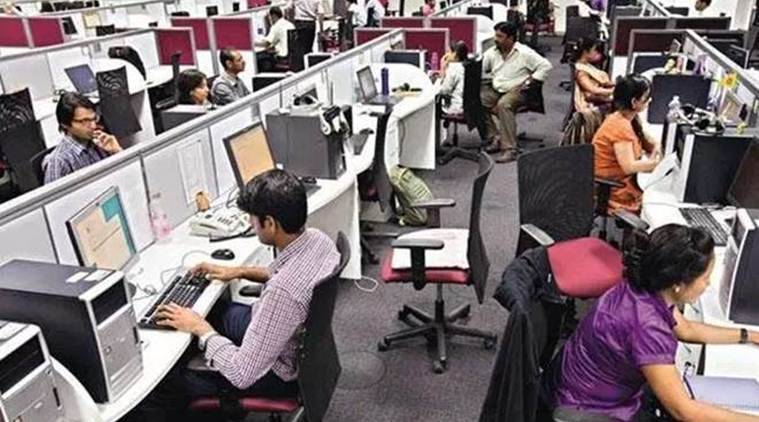
Disclaimer: Copyright infringement not intended.
Context
- India’s Services exports set a new record of USD 254.4 Billion in the financial year 2021-2022.
- The new record achieved in 2021-22 beats the previous high of USD 213.2 Billion in 2019-20.
- Also, Services exports hit an all-time monthly high of USD 26.9 Billion in March 2022.
Details
- Telecommunications, computer, and information services, other business services and Transport are the top contributors in Services exports during April-December 2021 .
- India’s overall exports (i.e. Services and Merchandise) touched USD 676.2 Billion in financial year 2021-2022 as both Services and Merchandise hit record high exports in financial year 2021-2022.
- India’s overall exports were USD 526.6 Billion and USD 497.9 Billion in 2019-20 and 2020-21 respectively.
- India’s Merchandise exports had crossed USD 400 Billion milestone in Financial Year 2021-2022 and stood at USD 421.8 Billion which is an increase of 44.6 percent and 34.6 percent over 2020-21 and 2019-20 respectively.
India’s Service Sector
- India's services sector covers a wide variety of activities such as trade, hotel and restaurants, transport, storage and communication, financing, insurance, real estate, business services, community, social and personal services, and services associated with construction.
Market Size
- The services sector of India remains the engine of growth for India's economy and contributed 53% to India's Gross Value Added at current prices in FY22 (until January 2022).
- India's services sector GVA increased at a CAGR of 11.43% to Rs. 101.47 trillion (US$ 1,439.48 billion) in FY20, from Rs. 68.81 trillion (US$ 1,005.30 billion) in FY16.
- India's IT and business services market is projected to reach US$ 19.93 billion by 2025.
- Services exports comprise a major part of the total export from India.
- India’s Manufacturing Purchasing Managers Index (PMI) rose to 54.7 in April 2022, up from 54 in March 2022.
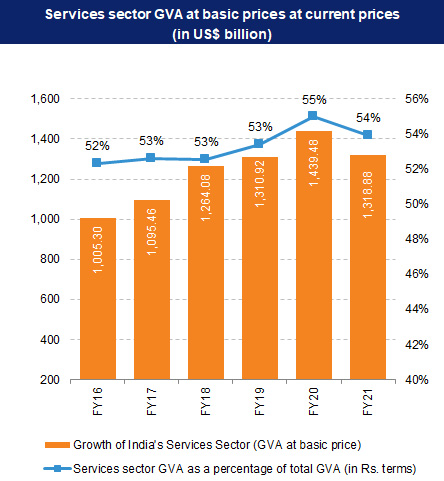
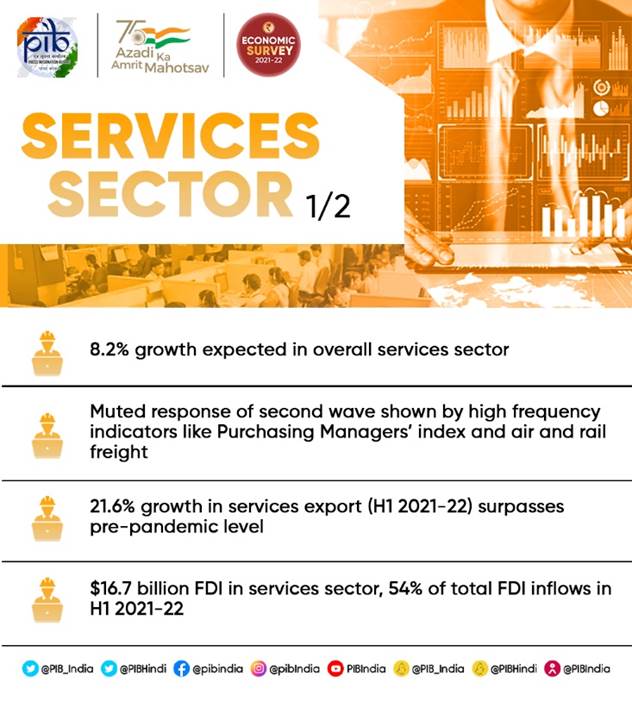
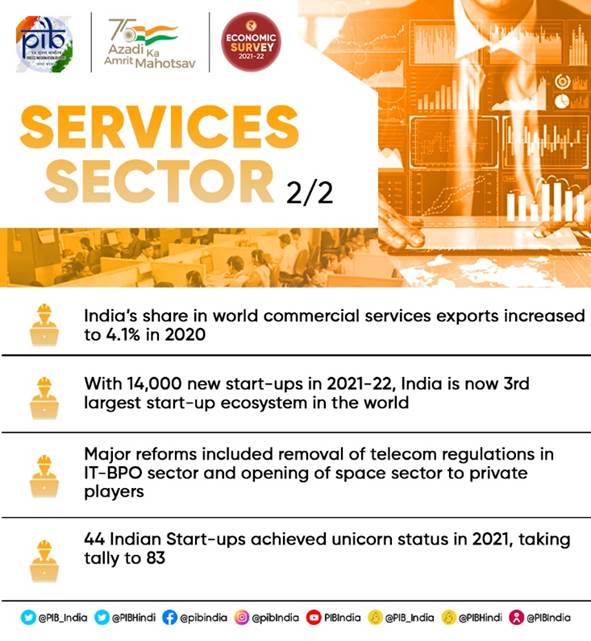
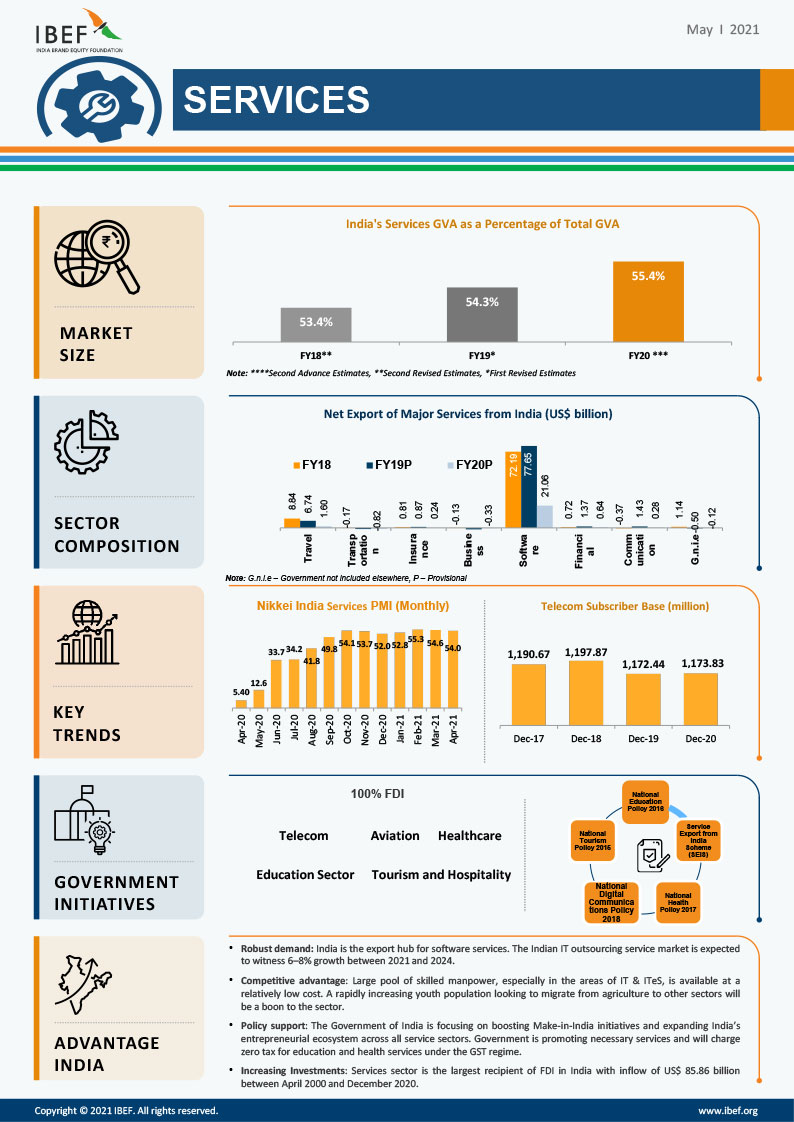
Challenges Faced by Service Sector in India
Lack of Skilled Labour
- Small and medium enterprises in India are highly labour-intensive. Many skilled workers migrate to other countries where they can find jobs with better wages and working conditions.
- This shortage of a skilled labour force makes it difficult for SMEs to run their business and productivity.
- Moreover, due to the lack of skilled labour, MSMEs in India have to hire untrained or unskilled employees. Hiring these unskilled workers often causes a decrease in the quality of products produced by MSMEs as they cannot meet international or domestic standards.
People Dominant
- Indian service sector depends on human contact and is also people-centric.
- The pandemic has caused massive disruptions across sectors, with many businesses facing temporary or permanent closure. However, some sectors such as technology platforms, e-commerce firms, healthcare services, FMCG companies, etc., have witnessed growth in demand and supply.
Taxation
- There is no allocation of tax holidays or incentives specifically earmarked for this thriving and rapidly growing service sector segment by either the state governments or central Government.
- However, both focus on creating a conducive environment, particularly addressing the financial challenges MSMEs and SME segments face due to increasing input costs.
Infrastructure
- The availability of infrastructure facilities has always been a big challenge, especially in rural and semi-urban areas.
- Most small businesses are located in rural or semi-urban areas where access to finance is difficult due to the lack of banking and other financial services such as banking products, insurance products, capital market products, etc. It has further contributed to their low growth rate over the years.
- The lack of infrastructural facilities leads to higher costs for business organisations, and it makes them dependent on the Government for support for investment in these facilities.
- The Government should provide incentives to the private sector to develop infrastructure projects.
Market Barriers
- India's trade within the sector of merchandise and services with its Non-WTO Partner countries has been hampered by several market entry barriers.
- Several market entry hurdles have impeded India's commerce with its Non-WTO Partner countries in the product and services sectors.
- For instance, even though the US is one of India's most important trade partners, there are several barriers to entry. These include -
- Licensing of skilled service providers that are usually regulated at the state level in the US.
- The restrictive regime in the case of shipping services in the US with many types of assistance to the domestic shipping sector, such as a minimum of fifty per cent of government shipments for the US-registered ships.
Government Initiatives to Promote Service Sector
- Establishment of 157 new medical colleges to boost accessibility of affordable health treatments among citizens.
- Production linked incentive (PLI) scheme to boost manufacturing of telecom and networking products in India.
- 2021, Phase-II of the Mahatma Gandhi National Fellowship to empower students and boost skill development.
- In 2021, the PM Ayushman Bharat Health Infrastructure Mission was launched by the government, to strengthen the critical healthcare network across India in the next four to five years.
- In 2021, India and the UK joined the 11th Economic and Financial Dialogue (EFD) to discuss the FTA (Free Trade Agreement) opportunities in services.
- In 2021, India and Australia announced its collaboration in cyber-enabled critical technologies, highlighting the requirement to boost the critical information security infrastructure such as 5G telecom networks.
- BharatNet programme to boost digital connectivity across India.
- FDI limit for insurance companies has been raised from 49% to 74% and 100% for insurance intermediates.
- Pradhan Mantri Kaushal Vikas Yojana (PMKVY) was launched in 600 districts with 300+ skill courses. Spearheaded by the Ministry of Skill Development and Entrepreneurship, the third phase will focus on new-age and COVID-related skills. PMKVY 3.0 aims to train eight lakh candidates.
- In 2021, the Department of Telecom, Government of India, signed an MoU with the Ministry of Communications, Government of Japan, to strengthen cooperation in the areas of 5G technologies, telecom security and submarine optical fibre cable system.
- In 2020, the Union Cabinet, approved to sign a memorandum of understanding (MoU) between the Ministry of Communication and Information Technology and the Department of Digital, Culture, Media and Sports (DCMS) of United Kingdom Government to cooperate in the field of telecommunications/information and communication technologies (ICTs).
- In 2020, the government selected Hughes Communications India to connect 5,000 village panchayats in border and naxal-affected states and island territories with satellite broadband under BharatNet project.
- Infusion of money in public sector banks through recapitalization of bonds.
- National Digital Health Mission (NDHM) to provide a unique health ID to every Indian and revolutionize the healthcare industry by making it easily accessible to everyone in the country.
- National Broadband Mission with an aim to provide Broadband access to all villages by 2022.
- Service Exports from India Scheme (SEIS) Scheme: Under the framework of the SEIS Scheme, service exporters for eligible service categories, are granted benefits in the nature of transferable Duty Credit Scrips as a percentage of Net Foreign Exchange earned on export of the eligible services in a financial year.
- Other Services Provider regulations, Telecom Sector Reforms and Consumer Protection (e-commerce) Rules, 2020.
PERFORMANCE OF SERVICE SECTOR: AS HIGHLIGHTED BY THE ECONOMIC SURVEY-2021-2022
- Services Sector contributed over 50% to India’s GDP, highlighted the Economic Survey 2021-22.
- Overall, the Services Sector grew by 10.8% Year on Year (YoY) in first half (H1) 2021-22”, stated the Survey.
FDI in Services
- The Economic Survey noted that the Services Sector was the largest recipient of FDI inflows in India.
- During H1 2021-22, Services Sector received $ 16.73 billion FDI equity inflows.
- “Financial, Business, Outsourcing, R&D, Courier, Tech testing & Analysis along with Education sub sector witnessed strong FDI inflows”, mentioned the Survey.
Trade In Services
- The Economic Survey highlighted that India had a dominant presence in global services exports.
- It remained among the top ten services exporter countries in 2020, with its share in world commercial services exports increasing to 4.1% in 2020 from 3.4% in 2019.
- The impact of Covid-19 induced global lockdown on India’s services exports was less severe as compared to merchandise exports, stated the Economic Survey.
- The Survey further mentioned that despite Covid-19 impact on transport exports, double digit growth in gross exports of services, aided by exports of software, business and transportation services, resulted in an increase of 22.8% in net exports of services in H1 2021-22.
Sub-Sector Wise Performance
IT-BPM (Information technology - Business Process Management) Sector
- The Economic Survey described IT-BPM sector as a major segment of India’s services.
- During 2020-21, according to NASSCOM’s provisional estimates, IT-BPM revenues (excluding e-commerce) reached $ 194 billion, growing by 2.26% YoY, adding 1.38 lakh employees.
- The Survey further noted that within the IT-BPM sector, IT services constitutes the majority share (>51%).
Startups and Patents
- The Economic Survey mentioned that Startups in India had grown remarkably over the last six years, most of which belonged to Services Sector. More than 61,400 startups have been recognized in India as of January 10, 2022. Further, the Survey stated that India had a record number of Startups (44) reaching unicorn status in 2021.
- The Economic Survey also mentioned that intellectual property, specifically patents were key to knowledge-based economy.
- The number of patents filed in India has gone up to 58,502 in 2020-21 from 39,400 in 2010-11 and the patents granted in India has gone up to 28,391 from 7,509 during the same period.
Tourism Sector
- The Survey stated that special international flights have been operating under the Vande Bharat Mission which was currently in its 15th phase and had carried over 63.55 lakh passengers.
Ports, Shipping and Waterways Services
- The Economic Survey observed that the development of ports was crucial for the economy. Ports handled around 90% of export-import cargo by volume and 70% by the value.
- The Survey stated that the total cargo capacity of all ports had increased to 1,246.86 Million Tonnes Per Annum (MTPA) as of March 2021 from 1052.23 MTPA in March 2014.
- Also, the Port traffic had picked up in 2021-22 registering a growth of 10.16% during April-November 2021, after hit by disruptions caused by Covid-19 in 2020-21.
- The Survey also mentioned the Sagarmala Programme, a flagship programme, aimed at promoting port-led development in the country with 802 projects worth Rs. 5.53 lakh crore under its ambit.
Space Sector
- The Survey noted that the Government undertook various reforms in space sector in 2020, envisaging participation of the private sector in providing space-based services.
These reforms included:
- Empowering New Space India Limited (NSIL) changing the present supply-based model to demand-driven model;
- Creating an independent nodal agencye. Indian National Space Promotion and Authorization Centre (IN-space) under the Department of Space; and
- Providing a predictable, forward-looking, well defined and enabling regulatory regime for space activities in the country.
Final thoughts
- India is undergoing a structural change in the service sector in the present emerging scenario.
- But this structural change has created more opportunities for self-employment and innovation, and however, it has made India face the problems of unemployment and skill employment.
- In the future, these structural changes in service sectors may make India's manufacturing sector leaner, more competitive, and technologically refined.
- The service sector is essential for almost every middle-class family. The poorest of Indian society also need to improve their living conditions, but it will not be entirely possible without the betterment of the service sector.
https://www.pib.gov.in/PressReleasePage.aspx?PRID=1822664

















